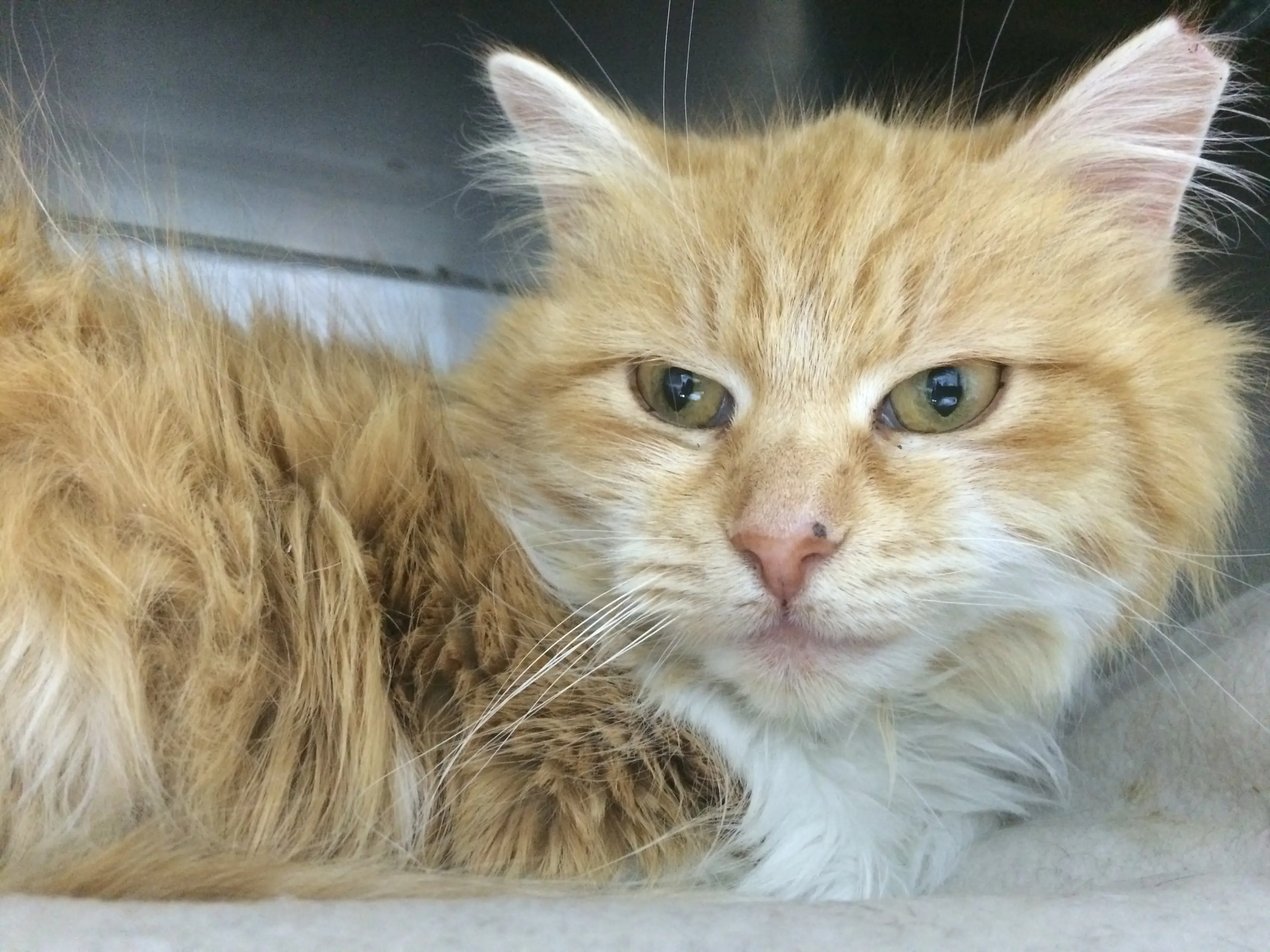What are community cats?
“Community cats” is an umbrella term that refers to all cats that are outside. They can be:
- Owned cats that are indoor/outdoor
- Cats that have been lost or abandoned
- or, Cats that are feral: “wild cats,” that live outdoors in the community.
How do I distinguish between friendly and feral cats?
Friendly outdoor cats will generally be more willing to approach humans and may even seek out human interaction. They likely, at one point, relied on or cohabitated with people and view them as positive. They may meow when you approach, follow you, or solicit attention.
Feral cats are very much like wild animals. These cats are unlikely to approach you and will often flee before you can get close to them. They are unlikely to vocalize or seek out any type of interaction with people.
 An ear-tipped cat
An ear-tipped cat
Why am I seeing feral cats in my neighborhood?
When you see feral cats in your neighborhood, you can bet that there are resources nearby. Cats are great survivors and they may be found anywhere they have access to food, water, and shelter. Sometimes that means unsecured garbage cans or an abundant rodent population. Other times, well-intentioned people provide food for feral cats, making their neighborhood attractive to more feral cats.
Who should I call about outdoor cats in my community?
If you simply wish to remove nuisance cats from your neighborhood, you should reach out to your local municipality, or animal control agency, to see if they have any means of addressing the situation. The number for Champaign County Animal Control is 217-384-3798.
One of the best ways to deal with feral cats is by implementing "TNR." TNR stands for Trap, Neuter, and Return. TNR is a system designed to help stabilize a group of outdoor cats by reducing their ability to breed and providing them with essential vaccines. The trapping is accomplished using humane, food-baited traps in the territory the cats are inhabiting. After a cat is trapped, it is brought to a vet clinic or humane agency for sterilization surgery (spay or neuter) and vaccination. While the cat is still under anesthesia, he will also be “ear-tipped.”
What is “ear tipping”?
Ear tipping is a procedure done while an animal is under anesthesia and involves removing the tip of the cat’s ear, leaving a flat line where the point used to be. This is a widely-known indicator that a cat has already been sterilized. Sterilizing a colony of community cats can be a months-long process involving many volunteers. When a volunteer sees that a trapped cat is already ear-tipped, she knows that cat can be immediately released and does not need surgery.
Trap, Neuter, and Return Resources
CCHS Trap, Neuter, and Return Program
CCHS is currently unable to provide spay/neuter surgeries for feral cats. If you would like help or information related to feral cats in your community, please call our Humane Investigator, Elijah Imlay, to discuss your situation and how we may be able to help. For example, we might be able to help you with humane trapping or trap rental (see below). Elijah can be reached at 217-344-7297 or by email at Elijah@cuhumane.org.
Champaign County Animal Control
CatSnap
Sterile Feral Foundation of Central Illinois
CCHS Feral-Cat Trap Rental Program
There are many different styles of traps on the market. At CCHS, we have two different styles available: the standard Tomahawk cat trap, as well as a TruCatch cat trap. Both traps are humane, pressure plated traps that are baited with food. The cat walks in to eat, steps on a pressure plate, and a door behind them closes.
Traps are available for rent on a first come, first served basis. There is no fee to rent a trap but you must fill out a rental agreement. Please call the shelter (217-344-7297) to arrange a time to pick up the trap. If you are unfamiliar with how a live trap works, a staff member will walk you through how and where to set the trap to be the most successful.
Note: Trapping cats requires time and vigilance. You will have to check the traps routinely and have a plan for transporting the trapped cats to a vet clinic for surgery promptly after trapping.